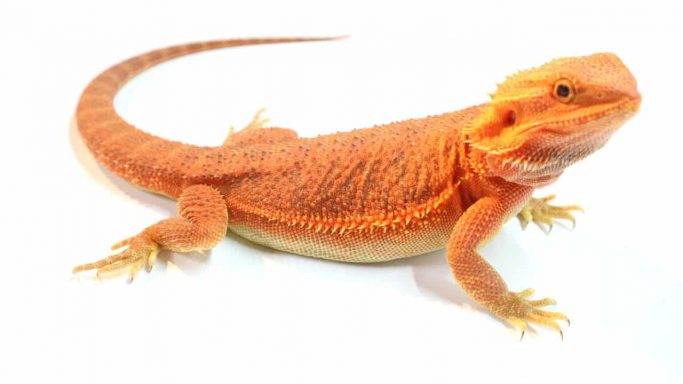A bearded dragon’s tail is almost half its total length and with individual caudal vertebrae bones. It helps them balance, mating, sending social signals, and so on. Without their tail, they would look smaller to their predators,
1. Do their tails grow back?
No. A bearded dragon’s tail doesn’t grow back. While some lizards can drop their tail as a means of escaping from their predators and they grow back another one, the beardies don’t’ drop it, and case it is bitten or cut off, it doesn’t grow back again.
Instead of dropping their tail, they will puff at their predator, open their jaws, and sometimes hiss if they cannot run away.

2. Tail injuries, fractures, and diseases
The tail is their most vulnerable part of their body when it comes to injuries from falling, bites, and so on. Common causes of fractures and injuries include:
- If housed together, these pets may bite each other’s tails as they fight. Also, juveniles and baby beardies may nip each other’s tail, thinking it is a bug. Finally, it is not uncommon for an aggressive male to bite a female’s tail.
- Secondly, your dog or cat may bite the tail off, especially if your dog or cat has strong hunting instincts. Be careful is you have dogs, cats, and beardies.
- Sometimes, if they fall as you handle them or on their own, their tail may fracture. Any intense pressure can break the tail’s caudal vertebrae. Fractures will result in ischemia as blood cannot flow past the fractured area.
- Furthermore, incomplete shedding where some pieces of the skin don’t shed well may constrict blood flow to their tail, leading to tail tip necrosis.
- Besides tail necrosis, these pets may suffer from tail rot, which makes the tail to be darker or black due to infections, injuries, cysts, abscess, and all that.
Cuts and some injuries will lead to blood loss. Apply pressure to help stop bleeding spot using a ball of cotton wool or gauze and let your herp treat it.
To avoid injuries, avoid housing these pets together since it also results in competition for various resources for basking spots and food. Also, take good care of their tail to avoid breakages, rots as they will not grow back.
3. Tail up
As part of their ordinary body language or gestures, while being adventurous, alert, or in hunting mode, it is possible to see your beardie walking with tail up.
